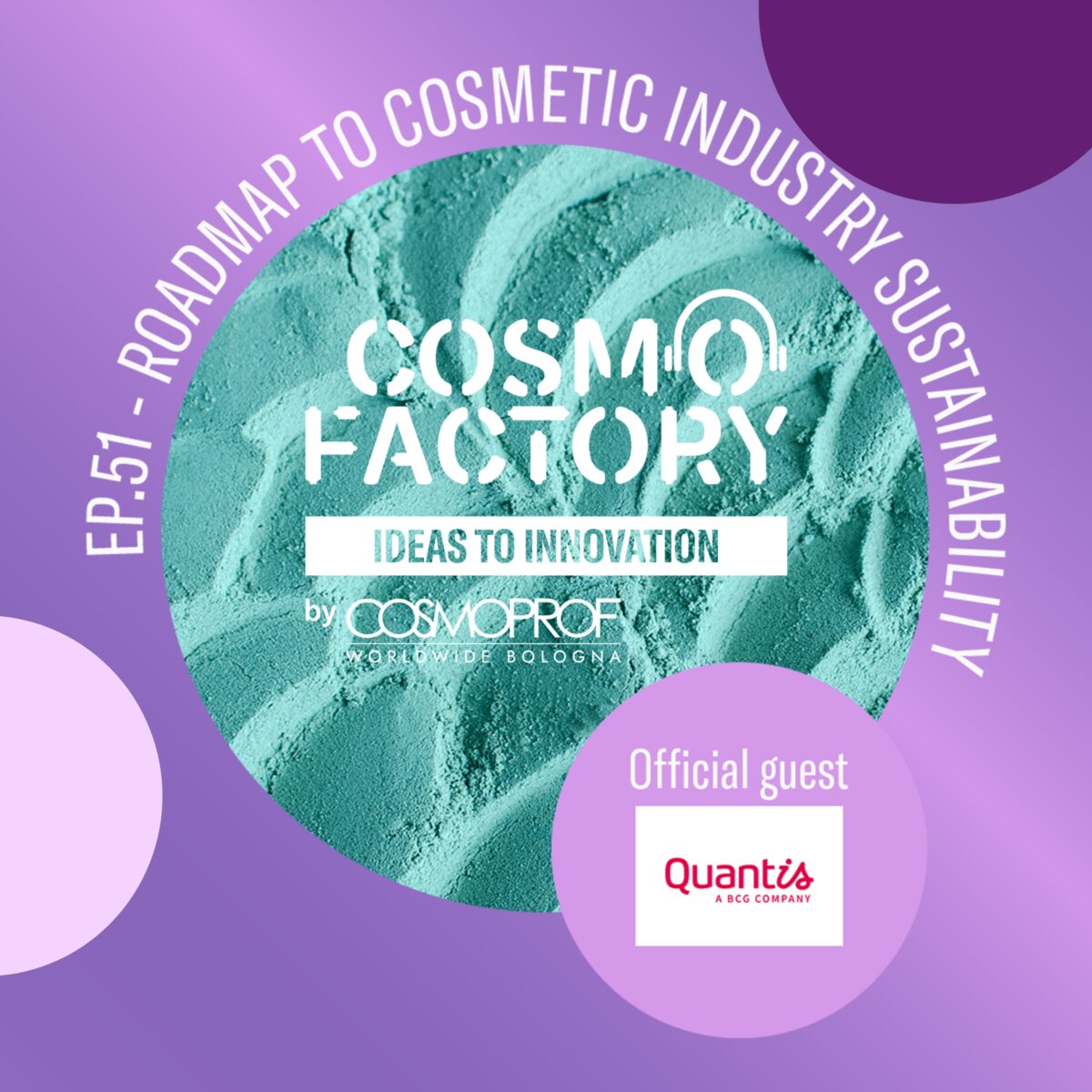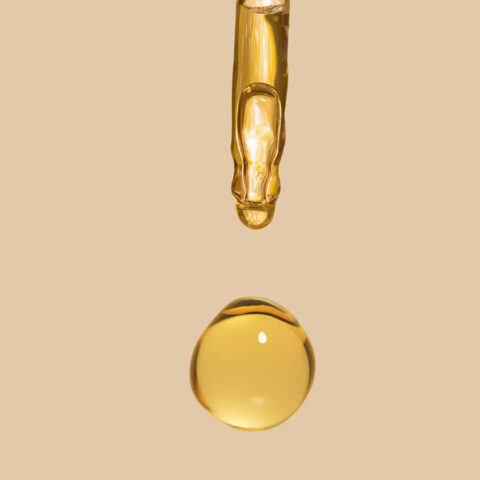The cosmetics and personal care industry’s sustainable transformation is a work in progress. Every type of stakeholder, from raw material suppliers to beauty consumers to waste management specialists, is involved. To make it all happen, there is an ongoing cycle of assessment, planning, implementation, monitoring, reporting and continuous improvement.
Emmanuel Hembert, Global Lead for Cosmetics, Personal Care and Pharma at Quantis, spoke on the Cosmoprof podcast to discuss the tools, strategies and innovations driving sustainability in the cosmetics and personal care industry.
Listen now to discover how the industry is reshaping itself to improve both their businesses and the planet.

How have corporate environmental sustainability efforts advanced over the past decades?
Emmanuel Hembert: Cosmetics companies first had to start measuring the impact of their products and their overall activities. Then, they had to make commitments and build roadmaps to meet these commitments according to specific standards. The third step is to activate these roadmaps and focus on the actions that will make a difference. Today, eco–design and circularity have become key topics that companies are addressing.
Can you speak to how the beauty industry has made measurable, meaningful change? Do you think we’ve made a difference in the health of the planet?
Emmanuel Hembert: The cosmetics industry has made significant progress over the past decade. For example, companies have done extensive work on what is called Scope 1, which refers to their own operations, minimizing the impact of their direct activities. They have evolved from focusing solely on climate issues to addressing a broader range of environmental topics, including nature conservation. Companies are now moving into the implementation phase of their sustainability strategies, which marks real progress.
The industry recognizes the need to align with consumer expectations and increasingly stringent regulations. But beyond compliance, it’s also about ensuring the long-term resilience of their business models. With the growing demand for natural cosmetics, companies must maintain a stable environment to ensure continued access to the natural resources they rely on.
The term “ecodesign” has already come up. What does ecodesign mean for major beauty brands?
Emmanuel Hembert: Ecodesign means integrating sustainability into product design with the goal of reducing environmental impact across the entire product lifecycle — from ingredient production to manufacturing, the use phase, and end-of-life disposal. L’Oréal, for example, has been a leader in this area. Almost a decade ago, they developed their own ecodesign process and tool, enabling them to measure the impact of their entire product portfolio. They implemented a governance system that makes it mandatory for every new product to be less impactful than its predecessor, creating a virtuous cycle of improvement. Today, everyone at L’Oréal, whether in marketing, product development, or operations, uses this system, known as SPOT, to guide their sustainability efforts.
How important is it for a company to create its own tool? Are there alternatives for those who can’t?
Emmanuel Hembert: Until recently, we advised companies to develop their own tools because there were no satisfactory solutions on the market. However, over the past year and a half, many new digital solutions have emerged. Initially, they focused on measuring and tracking corporate carbon footprints, but they are now moving toward product-specific footprints and integrating ecodesign features to help companies develop more sustainable products.
It sounds like you’re encouraging your clients to work with these tools. But how do they choose environmental sustainability goals that are both meaningful and achievable?
Emmanuel Hembert: You need a comprehensive, end-to-end process. First, identify the hotspots — the areas of the company or products that have the greatest environmental impact. Then, look at existing sustainability frameworks and select one that aligns with your priorities. Next, work with different company functions — product development, logistics, procurement, marketing — to identify practical levers for reducing impact. Based on this, you can create a roadmap and determine the reduction pathway and the gap to your target. Leadership must then carefully assess what operational changes are needed — whether in product portfolios, supplier interactions, or other areas — to close the gap. The level of ambition depends on the company’s willingness, but the process defines a pathway to success.
Sometimes comparisons help clarify things. Can you share examples of unrealistic sustainability goals?
Emmanuel Hembert: Sustainability goals become unachievable when they are not backed by a rigorous process and are instead announced as ambitions without being grounded in operational reality. Sometimes companies set goals to stand out, or due to strong leadership beliefs, or simply to follow competitors. But without a structured, practical approach that identifies trade-offs and operational levers, goals are unlikely to succeed.
I hear a lot about biodegradability. Any thoughts on that as a sustainability goal?
Emmanuel Hembert: Biodegradability is becoming an important topic, especially with new regulations coming in Europe, such as directives on wastewater and wastewater treatment. Companies are increasingly concerned about this issue. Additionally, public scrutiny, such as backlash against PFAS, is intensifying. Discussions around biodegradability are very active not only in Europe but also in the U.S. and Asia. It’s becoming a central concern for many companies.
How are you and your clients working with the cosmetics industry’s supply chain, retailers, and even consumers to advance circularity? Tell me a bit about your background.
Emmanuel Hembert: At Quantis, our ambition is to transform the entire value chain, end to end. We’ve been working for a long time with ingredient suppliers and retailers. A large part of the cosmetics industry’s impact falls under Scope 3 — activities outside the direct control of brands, like their suppliers. It’s critical to work with suppliers to reduce the impact of ingredients. Retailers are equally important; they have significant influence over sustainability by shaping supplier criteria and communicating with consumers. We are actively collaborating with retailers to drive change at the industry level.
Is there still room for creativity in solving beauty industry sustainability challenges, or has it become purely systematic?
Emmanuel Hembert: There is constant innovation in the cosmetics industry. In fact, it is a highly innovative sector, with 25-30% of product portfolios renewed every year, allowing for the rapid integration of sustainable innovations. Many new companies are building sustainability into their foundations from the start. In terms of activating sustainability strategies, we are still in the experimental phase where operational trials are ongoing. For example, refill systems are challenging to implement effectively, and companies must find ways to engage consumers in a positive and appealing manner to make sustainable behaviors attractive.






